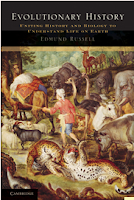But honestly, the thing that has struck me most so far as I read is the timelessness and wisdom in MacArthur's introduction. Issues ranging from focusing on questions versus systems, the value of repeated patterns, complexity, and what generality really means, aren't at all new.
“To do science is to search for repeated patterns, not simply to accumulate facts, and to do the science of geographical ecology is to search for patterns of plant and animal life that can be put on a map. The person best equipped to do this is the naturalist who loves to note changes in bird life up a mountainside, or changes in plant life from mainland to island, or changes in butterflies from temperature to tropics. But not all naturalists want to do science; many take refuge in nature’s complexity as a justification to oppose any search for patterns. This book is addressed to those who do wish to do science. Doing science is not such a barrier to feeling or such a dehumanizing influence as is often made out. It does not take the beauty from nature. The only rules of scientific method are honest observations and accurate logic. To be great it must also be guided by a judgment, almost an instinct, for what is worth studying. No one should feel that honest and accuracy guided by imagination have any power to take away nature’s beauty.
Science should be general in its principles. A well-known ecologist remarked that any pattern visible in my birds but not in his Paramecium would not be interesting, because, I presume, he felt it would not be general. The theme running through this book is that the structure of the environment, the morphology of the species, the economics of species behaviour, and the dynamics of population changes are the four essential ingredients of all interesting biogeographic patterns. Any good generalization will be likely to build in all these ingredients, and a bird pattern would only be expected to look like that of a Paramecium if birds and Paramecium had the same morphology, economics, and dynamics, and found themselves in environments of the same structure.”
--Robert MacArthur
It's interesting that an introduction written in 1972 is so relevant that it could have been written today. The pessimistic view is that ecology is just iterating through the same problems and solutions, or progress is slow. Or maybe classic books remain as classics because their authors understood and explored the issues at the core of the science and had the benefit of being there in the formative years. It's fun to see that when MacArthur thanks particularly four friends who influenced his work most, he means G. Evelyn Hutchinson, E.O. Wilson, Richard Levins, and Jared Diamond. I suppose any book influenced by the combination of all these scientists and written by MacArthur will always have something interesting to say.


